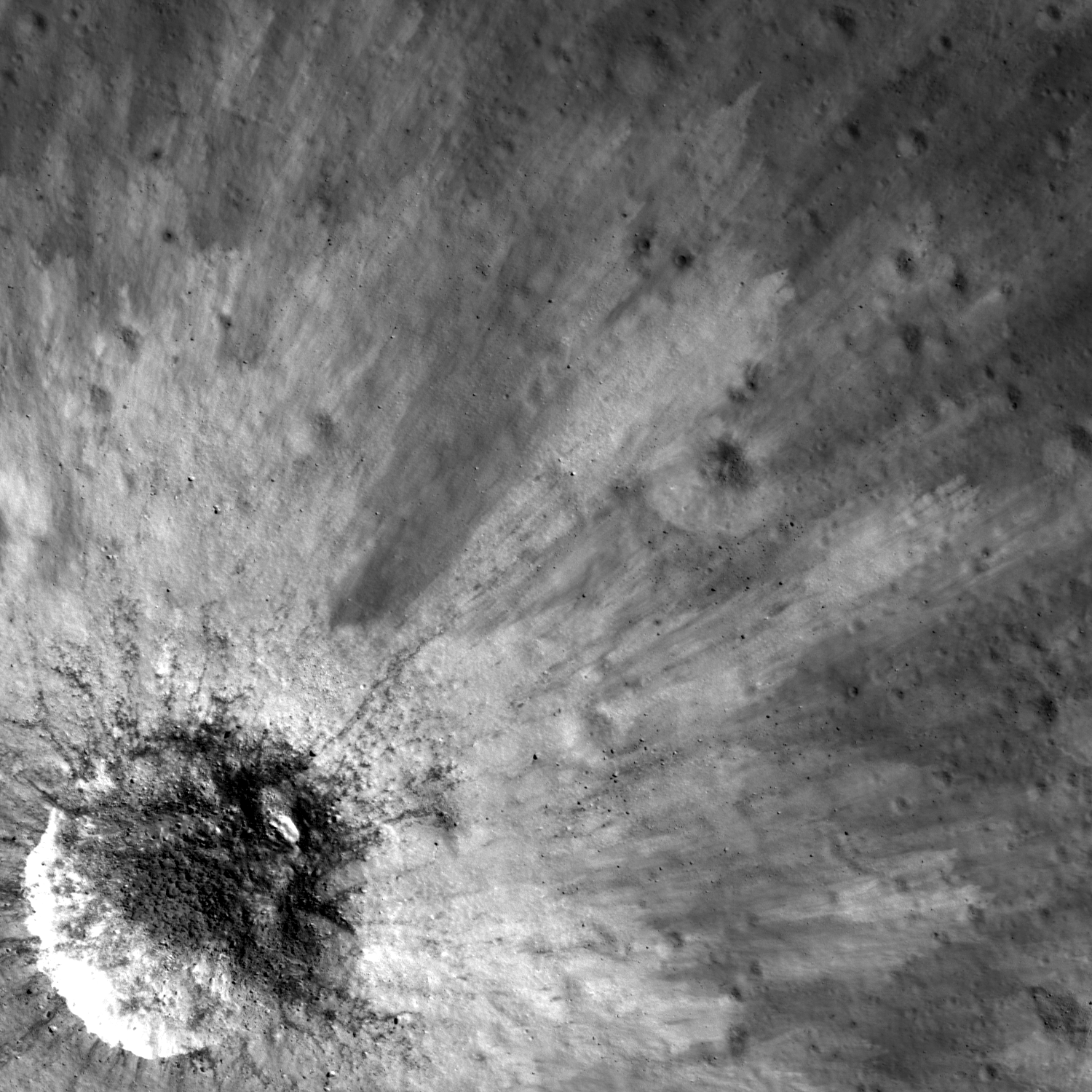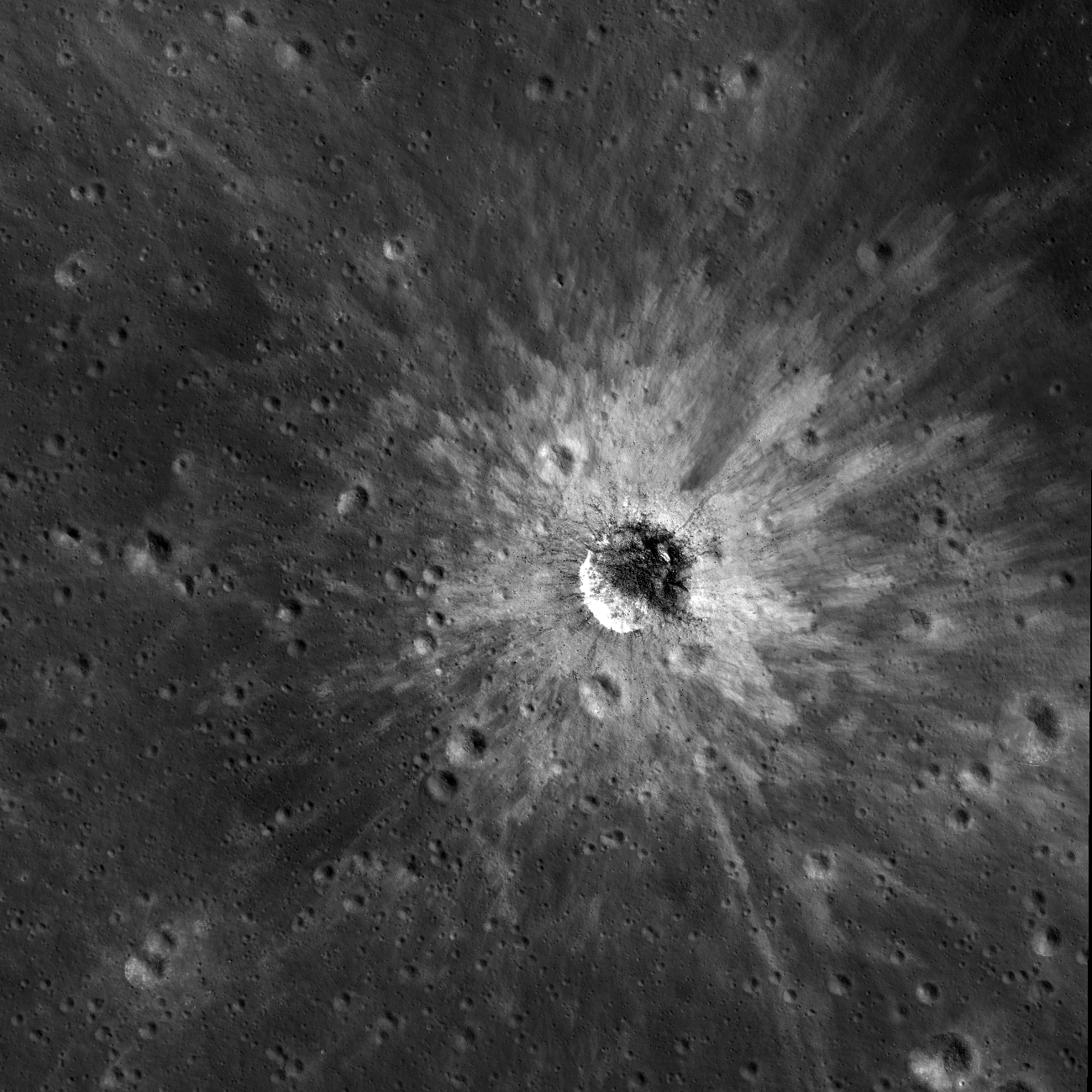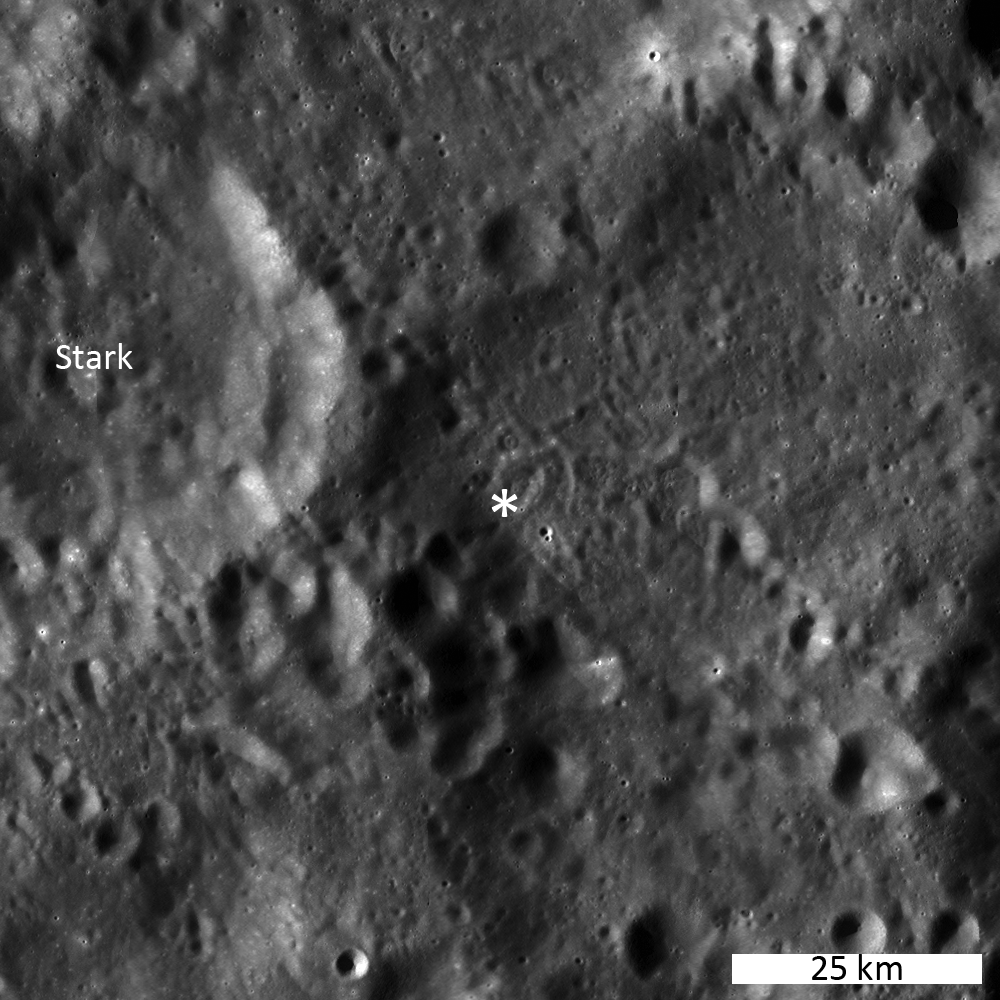
Small, Copernican-aged craters abound on the Moon and their ejecta blankets often look like miniature starbursts. For young craters like this one, located on the farside at 25.876°S, 136.081°E, the ejecta is high-reflectance because it was recently exposed by the impact process and is thus really fresh material.
When we observe the ejecta blanket in detail, there are variations in reflectance within the ejecta and it looks as though the ejecta swept out from the crater in sheets. During the impact event, material is ejected from the growing crater and is emplaced over a short period of time. However, the emplacement is not instantaneous and the ejecta is expelled from the growing crater at different speeds and angles depending on where within the impact cavity it originates. Some of the target rock is melted and is also sprayed out of the crater with the pulverized target material. The bright and dark fingers of ejecta seen in the opening image may represent granular and melt materials, respectively. Furthermore, the ejecta farthest away from the crater is thinner and less continuous than the ejecta closest to the crater. At the distal margins of the ejecta blanket, contrasts may simply be due to original mature material showing through between fingers of ejected fresh material. Over geologic time, the starburst pattern of ejecta will gradually disappear as the material matures, and eventually no ejecta blanket will be visible in the NAC images at all.
Within the full LROC NAC image, how far can you trace the streamers of high-reflectance ejecta?
Related Posts: Action Shot
Small crater at the southern rim of Menelaus
Intricate young ejecta blanket in ancient Murchison Crater
Published by Lillian Ostrach on 28 March 2012

